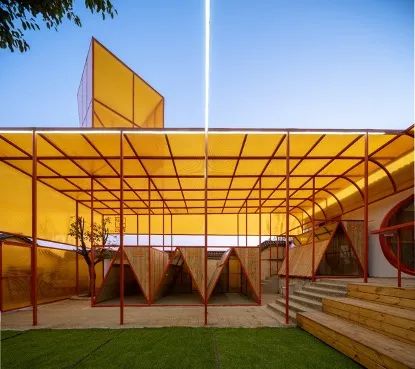设计师带你读懂当代戏剧:NELKEN
The Contemporary Performance through the Eyes of a Designer : ”NELKEN“
01
设计师的看剧笔记
Designer's Note
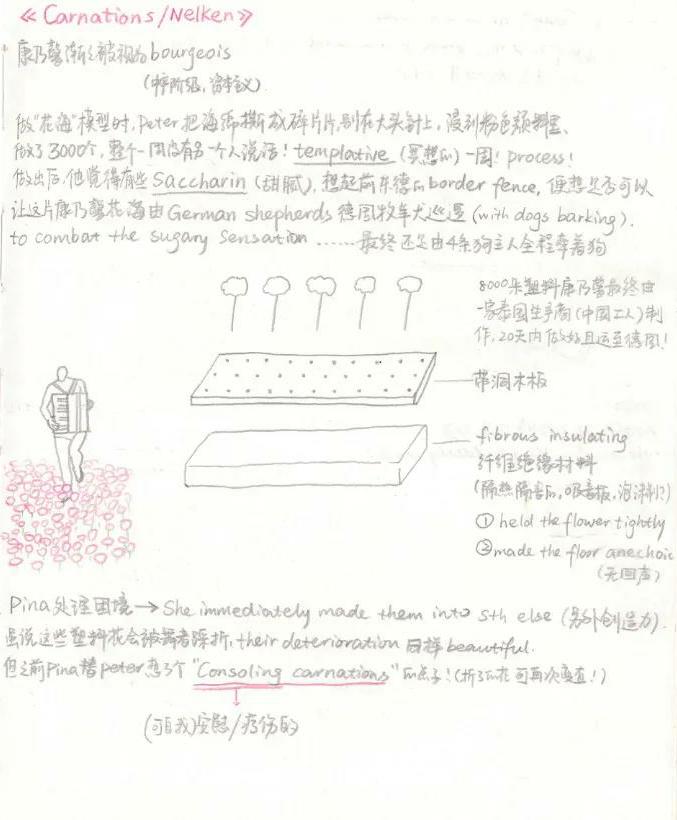
02
《Nelken》
在花海中舞蹈
Dance in the sea of flowers
“Nelken”一词来源于德语的康乃馨, Pina Bausch的这部作品“Nelken”于1982年首次演出,是她20世纪舞台上最重要的作品之一,同时也是Tanztheater Wuppertal剧院的传说。
这整部剧中,皮娜用敏锐的眼睛和对生活超强的观察力,带领观众一起体会在舞蹈中展现出的生活本质:人与人在亲密与疏离的游荡,在痛苦与绝望间的挣扎,在暴力与温柔之间转换的关系。再加之用8000枝康乃馨为整个故事带来了前所未有的视觉震撼,这在上世纪八十年代可谓是一个创世纪的举动,同时也对后世的舞台创作及戏剧发展带来了深远的影响。
The word "Nelken" comes from the German carnation. This work "Nelken" by Pina Bausch is one of the most important works on the stage of the 20th century, and it is also the legend of the Tanztheater Wuppertal Theater.
In this whole play, Pina uses her keen eyes and super-observation of life to lead the audience to experience the essence of life shown in the dance: people wandering in intimacy and alienation, between pain and despair. Struggle, the transition between violence and tenderness. In addition, the use of 8,000 carnations brought an unprecedented visual shock to the whole story. This was a creation in the 1980s, and it also had a profound impact on the stage creation and drama development of later generations.
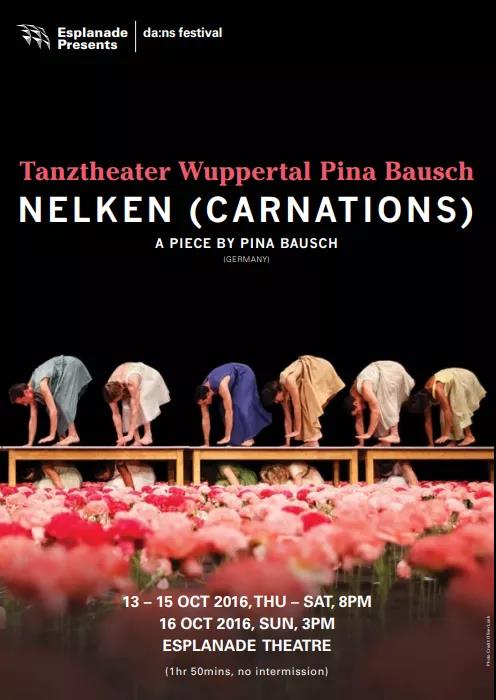
03
关于《Nelken》
About 《Nelken》
03-1 导演和编舞: 皮娜·鲍什
Direction and Choreography: Pina Bausch

皮娜·鲍什(Pina Bausch),1940年出生于Solingen,2009年在Wuppertal去世。她在Essen的Folkwang学校接受了Kurt Jooss的舞蹈训练,在这段时间中她习得了卓越的舞技。在Wuppertal剧院的导演阿诺·伍斯坦霍弗(Arno Wustenhofer)聘请她担任舞蹈指导后不久,她从1973年秋季开始将剧团更名为伍珀塔尔坦茨剧院(Tanztheater Wuppertal)。剧院的更名虽然一开始就引起争议,但逐渐获得了国际认可。它的诗性元素与日常元素的结合,对舞蹈的国际发展产生了决定性的影响。Pina Bausch被授予一些全球性最伟大的奖项和荣誉,是当今最重要的编舞家之一。
Pina Bausch was born 1940 in Solingen and died 2009 in Wuppertal. She received her dance training at the Folkwang School in Essen under Kurt Jooss, where she achieved technical excellence. Soon after the director of Wuppertal's theatres, Arno Wüstenhöfer, engaged her as choreographer, from autumn 1973, she renamed the ensemble the Tanztheater Wuppertal. Under this name, although controversial at the beginning, the company gradually achieved international recognition. Its combination of poetic and everyday elements influenced the international development of dance decisively. Awarded some of the greatest prizes and honours world-wide, Pina Bausch is one of the most significant choreographers of our time.

03- 2 线索
Clues
古希腊神话中,阿卡迪亚是常年花开不败,鸟语花香的神秘仙境,同时它还是潘神的故乡,也是不少中世纪诗人和哲学家心中乌托邦式的理想国,在西方被誉为希腊的世外桃园。当年的皮娜·鲍什,正是受这段故事的启发,便有了《Nelken》的创作。
穿着西装的男人面对观众站着,伴随着美妙的音乐演绎着“我爱的男人”的手语表演。一个女人只穿着白色内裤,黑色高跟鞋,小心翼翼地踩着康乃馨在舞台上穿梭,剧中的情节就像生活一样,与我们的生活紧密的联系在一起,为作品增添了丰富感和真实感。二十三名舞者和四名男演员在花丛中穿梭,时而无辜,时而压抑。从浪漫温柔的插曲到病态黑暗的转折,一段乌托邦的解体过程被诙谐而又略带悲凉地呈现在人们眼前。直到最后花海被踩踏的狼狈不堪,似乎在暗示着作品的主旨---“爱是永恒的战场”。
In ancient Greek mythology, Arcadia is a mysterious fairyland with unbeaten flowers and fragrance of birds and flowers. At the same time, it is also the hometown of God Pan. It is also a utopian ideal country in the hearts of many medieval poets and philosophers. It is known as Greece in the West The Xanadu. Pina Bausch was officially inspired by this story and created "Nelken".
A man in a suit stood facing the audience, performing a sign language performance of "The Man I Love" accompanied by wonderful music. A woman only wears white underwear and black high heels, walking carefully on the stage with carnations. The plot in the play is like life, closely linked to our lives, adding richness and realism to the work. Twenty-three dancers and four male actors shuttled among the flowers, sometimes innocent and sometimes depressed. From a romantic and gentle episode to a morbid and dark transition, the disintegration of a utopia is humorously and slightly sadly presented to people. Until the end, Huahai was trampled in embarrassment, which seemed to imply the theme of the work---"Love is the eternal battlefield"

03-3 舞台
Stage
舞台上有近千朵及膝的人造康乃馨。那些亲眼见证过现场的观众,无一不被这副壮丽的景观所震撼。而现场的8000束康乃馨,它的花瓣和茎是由塑料制成,在不规则的荒野上被整齐地排列成一排。在这个假花田里,康乃馨被制作成均匀的高度,没有任何的颜色偏差,一一展现在观众的面前,称得上是开创了舞台设计上的新形式。而粉色康乃馨的花语是:“永远年轻美丽,永远不会忘了你",选择它作为舞台的主要道具,可以看作是皮娜对”爱“的一种艺术表现形式。
There are nearly a thousand knee-length artificial carnations on the stage. Those audiences who have witnessed the scene with their own eyes were all shocked by this magnificent landscape. The 8,000 carnations on site, whose petals and stems are made of plastic, are neatly arranged in a row on the irregular wilderness. In this fake flower field, the carnations are made to a uniform height without any color deviation, and they are displayed in front of the audience one by one, which can be called a new form of stage design. The flower language of pink carnations is: "Always young and beautiful, and never forget you". Choosing it as the main stage prop can be regarded as an artistic expression of Pina's "love".
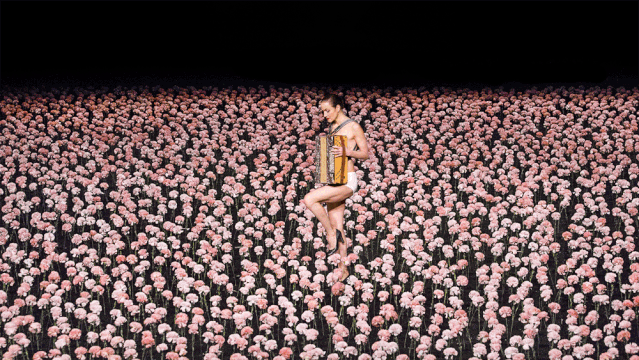
03-4 场景布置
Scene layout
NELKEN的场景布置通过三层材料的粘贴黏合而成,第一层是8000枝康乃馨花束,由一家泰国的工厂在20天内手工制作而成。它们不远千里飘洋过海来到德国只为展现最震撼的戏剧现场。第二层为带洞的木板,其主要作用是起到固定位置及限定高度;而最底部为纤维绝缘泡沫板,它可以起到隔热隔音的作用。我们可以感受到整体的场景布置及道具的选材,都是通过精心的挑选及人工制作而成。
NELKEN's scene layout is made by pasting and bonding three layers of materials. The first layer is a bouquet of 8,000 carnations, which was handcrafted by a Thai factory in 20 days. They travelled far and wide to come to Germany just to show the most shocking drama scene. The second layer is a wooden board with holes, its main function is to fix the position and limit the height; and the bottom is the fiber insulation foam board, which can play the role of heat insulation and sound insulation. We can feel that the overall scene layout and the selection of props are all carefully selected and artificially made.
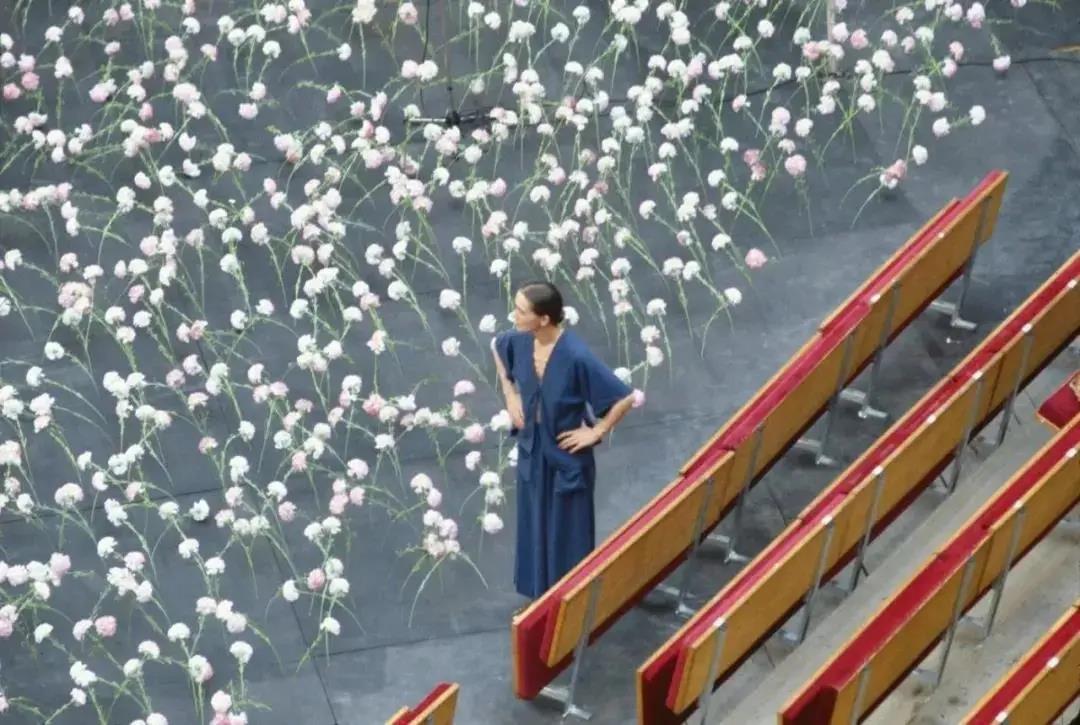
04
"Nelken "效应
"Nelken " effect
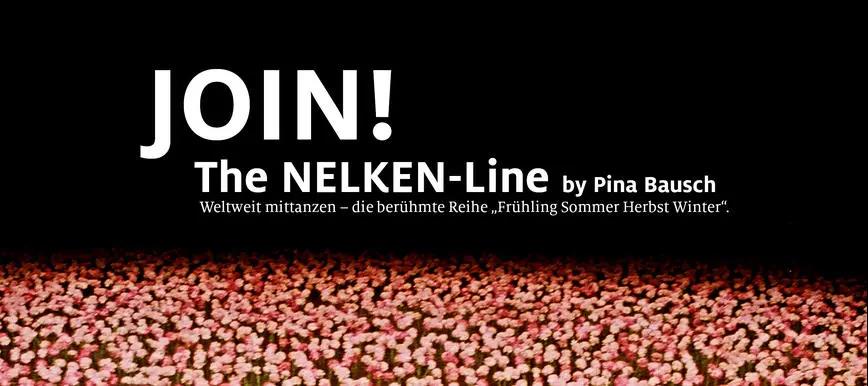
四季舞
The NELKEN-Line
Pina Bausch基金会发起的Nelken Line活动,受到了全球多个国家群众的参与。Nelken Line的舞蹈源于1982年皮娜的作品“ Nelken”,其中几个简单的手势串联成舞蹈,寓意着“春,夏,秋,冬”四个不同的季节。
这个活动在全球社会引起了广泛的传播,让舞蹈发生在任何的地方:比如客厅,厨房,花园,办公室,学校,公园,停车场,森林,街道或海滩上……通过互联网群众的广泛参与及传播,我们可以看到大家对Nelken的不同的理解,也为我们呈现出更加多元化的新版本,是对经典的致敬,同时也是将戏剧带入生活的有效方式。
The Nelken Line event launched by the Pina Bausch Foundation this year has attracted the participation of people from many countries around the world. The dance of Nelken Line originated from Pina's work "Nelken" in 1982, in which a few simple gestures are connected to form a dance, implying the four different seasons of "spring, summer, autumn and winter".
This activity has caused widespread dissemination in the global society, allowing dances to occur anywhere: such as living rooms, kitchens, gardens, offices, schools, parks, parking lots, forests, streets or beaches... through the extensive participation of the masses on the Internet and Through dissemination, we can see everyone’s different understandings of Nelken and present us with a more diversified new version, which is a tribute to the classics and an effective way to bring drama to life.

致谢
Credits
导演和编舞 / Direction and Choreography:
皮娜 鲍什 Pina Bausch
布景设计 / Set design
彼得·帕布斯特 Peter Pabst
戏服 / Costume
马里昂·奇托 Marion Cito
音乐 / Music
弗朗兹·莱哈 Franz Lehar
路易斯·阿姆斯特朗索菲·塔克 Sophie Tucker
......
联合演出 /Collaboration:
露丝阿马兰特 Ruth Amarante
保罗·阿兰吉梅诺 Paul Alanjimeno
艾玛·巴罗曼 Emma Barrowman
......
首次展演 / First performance:
1982年12月30日 伍珀塔尔歌剧院
December 30, 1982 Wuppertal Opera House
演出时长 / Duration:
1h 50min, one intermission
关于设计师
About the Designer

廖青
莫方 Eating Lab+Gallery+Theater 主理人
荷兰皇家艺术学院室内建筑专业
(Interior Architecture) 研究生
清华大学美术学院环境艺术设计系室内设计专业 本科
Liao Qing
Mofang Eating Lab Gallery Theater Principal
Graduate student of Interior Architecture,
Royal Academy of Arts in the Netherlands
Bachelor of Interior Design, Department of Environmental Art Design, School of Fine Arts, Tsinghua University

